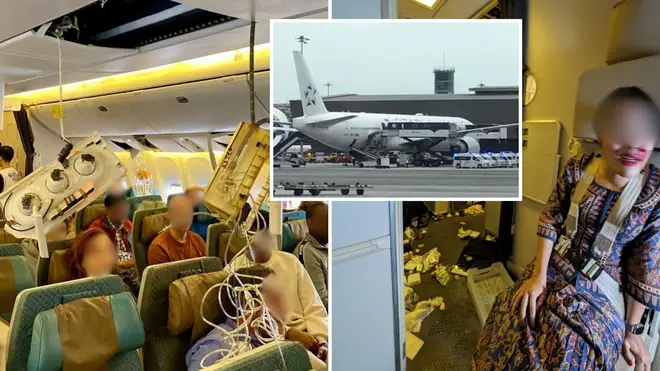Aircraft Turbulence

- 22 May 2024
Why is it in the News?
A passenger died and many were injured when a Singapore Airlines’ Boeing 777 headed from London to Singapore “severe turbulence” en route.
What is the Aircraft Turbulence
- Turbulence means disruption of airflow over the wings of an aeroplane, which causes it to enter irregular vertical motion.
- These pockets of disturbed air can have many causes, most obviously the unstable weather patterns that trigger storms.
- It is caused by the relative movement of disturbed air through which an aircraft is flying.
There are at least seven kinds of turbulence that an aircraft can run into:
- Wind Shear: It happens when there is a sudden change in wind direction, whether vertically or horizontally.
- Typically occurs close to thunderstorms, jet streams, etc.; tricky for pilots as tailwinds suddenly change to headwinds or vice versa.
- Frontal: Created in the frontal zone when warm air is lifted by a sloping frontal surface and friction between opposing air masses.
- Most palpable when warm air is moist; intensity increases with thunderstorms. Most commonly close to thunderstorms.
- Convective: When land surface temperature rises, the air above the ground heats up and rises, creating air pockets around it.
- Convection currents cause difficulties during approach as they tend to affect the rate of descent.
- Wake: It forms behind an aircraft when it flies through air-creating wingtip vortices.
- Mechanical: This type of turbulence occurs when tall solid objects such as mountains or highrise constructions disrupt the normal airflow, causing the air for planes to fly through to become dirty.
- Clear Air: It occurs when an aircraft crosses from one air mass to another, which has a different direction.
- Clear air turbulence could also happen when an aircraft moves out of a jet stream. Clear air turbulence is mainly caused by wind or jet streams.
- Mountain View: It is one of the most severe; these are oscillations that form on the downwind side of mountains when strong winds flow towards mountains in a perpendicular fashion.
- Aircraft tracking perpendicularly across, or downwind of a mountain, may experience a sudden loss of altitude followed by a sudden reduction in airspeed.
Are turbulence incidents dangerous?
- It depends on their nature and intensity.
- Aircraft undergo some form of turbulence on a regular basis and pilots are trained to deal with these.
- However, there have been several instances when turbulence has brought down modern jetliners.
Even in these cases, while intense turbulence has been the main cause of an accident, several other factors — such as lack of proper training, and poor dissemination of weather or wind-related information — have contributed to the accident.
